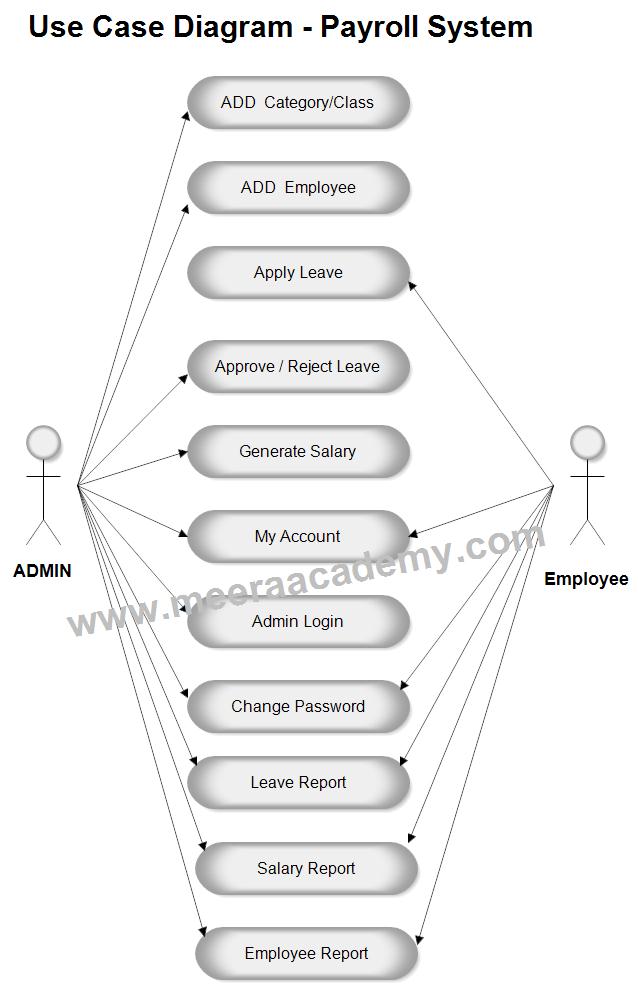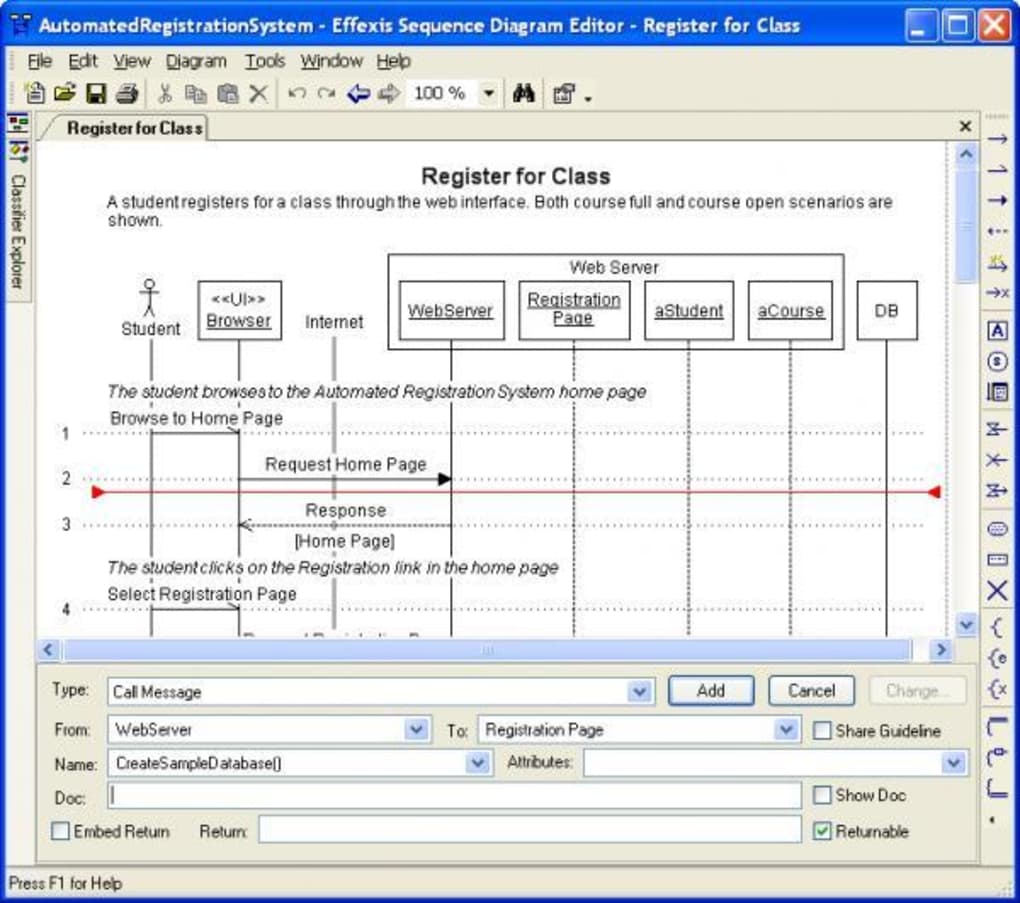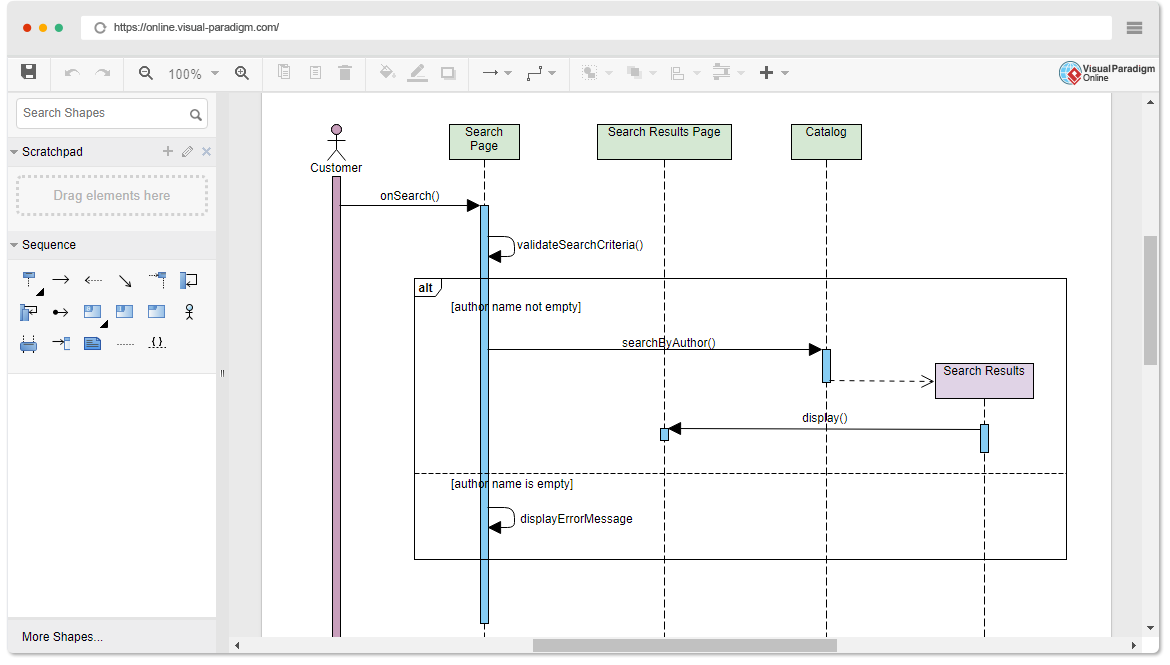

The SysML shapes example "Design elements - Sequence diagram" is included in the SysML solution from the Software Development area of ConceptDraw Solution Park. It should be the result of a message, either from the object itself, or another.

When an object is destroyed (removed from memory), an X is drawn on top of the lifeline, and the dashed line ceases to be drawn below it (this is not the case in the first example though).

Activation boxes, or method-call boxes, are opaque rectangles drawn on top of lifelines to represent that processes are being performed in response to the message (ExecutionSpecifications in UML). Asynchronous calls are present in multithreaded applications and in message-oriented middleware. If a caller sends an asynchronous message, it can continue processing and doesn’t have to wait for a response. If a caller sends a synchronous message, it must wait until the message is done, such as invoking a subroutine. Solid arrow heads represent synchronous calls, open arrow heads represent asynchronous messages, and dashed lines represent reply messages. Messages, written with horizontal arrows with the message name written above them, display interaction.
#SEQUENCE DIAGRAM ONLINE TOOL PRO#
Use it to design your sequence diagrams using ConceptDraw PRO diagramming and vector drawing software. The vector stencils library "Sequence diagram" contains 32 SysML symbols. This example of UML sequence diagram symbols for the ConceptDraw PRO diagramming and vector drawing software is included in the ATM UML Diagrams solution from the Software Development area of ConceptDraw Solution Park. Ī message sent from outside the diagram can be represented by a message originating from a filled-in circle (found message in UML) or from a border of the sequence diagram (gate in UML)." When an object is destroyed (removed from memory), an X is drawn on top of the lifeline, and the dashed line ceases to be drawn below it. Objects calling methods on themselves use messages and add new activation boxes on top of any others to indicate a further level of processing. Solid arrow heads represent synchronous calls, open arrow heads represent asynchronous messages, and dashed lines represent reply messages.Īctivation boxes, or method-call boxes, are opaque rectangles drawn on top of lifelines to represent that processes are being performed in response to the message (ExecutionSpecifications in UML). Leaving the instance name blank can represent anonymous and unnamed instances. If the lifeline is that of an object, it demonstrates a role. This allows the specification of simple runtime scenarios in a graphical manner. "A sequence diagram shows, as parallel vertical lines (lifelines), different processes or objects that live simultaneously, and, as horizontal arrows, the messages exchanged between them, in the order in which they occur. Use it for object-oriented modeling of your bank information system. The vector stencils library "Bank UML sequence diagram" contains 34 shapes for drawing UML sequence diagrams.


 0 kommentar(er)
0 kommentar(er)
